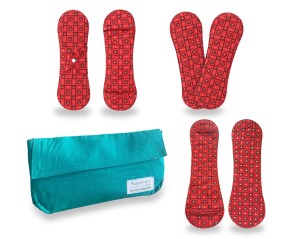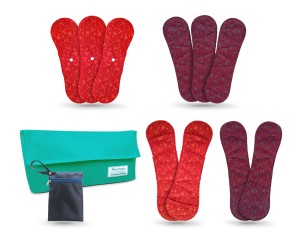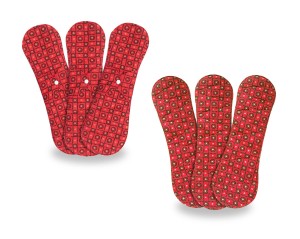FAQs about Reusable Pads
2 minute read
Reusable menstrual pads work in much the same way as disposable sanitary pads, with one major difference. After use, one washes a reusable pad and uses it again. Whereas, one throws away a disposable pad after one use. Most reusable pads are designed to be just as convenient as disposable pads. They need to be changed after a few hours just as one would change disposable pads.
In countries like the US, reusable menstrual pads have been sold for decades. In India, they are a more recent phenomenon. In 2021, the Bureau of India Standards notified ISO standards for reusable sanitary pads. The demand for these pads is growing as more and more consumers become aware of the health risks of using disposable sanitary pads which often have chemical additives. As long as they are washed and dried properly, reusable menstrual pads are completely safe.
In recent years, the number of reusable pad makers in India has grown significantly. There is increasing demand for these pads because they are in fact, perceived to be more comfortable than disposable pads. Disposable pads often cause rashes and reusable pads do not – this is a common refrain that we hear from Saukhyam sanitary pad users. Reusable pads are comfortable; hence menstruating women are making the shift in large numbers.
The clear pros are that reusable pads create no waste and have no chemical additives. Reusable sanitary pads help one save a lot of money because they last for a few years and repeated purchases every month are not needed. Some may feel that the extra time spent in washing and drying is a con, but many others say that they would earlier spend more time in going to the store every month to buy disposable pads.
They are usually made of fabric. Many reusable sanitary pads are cloth pads and uses cotton cloth as the top and bottom layers , as well as the absorbent core. Saukhyam is the world’s first reusable pad brand to use natural banana fiber as the absorbent. Saukhyam pads also use cotton cloth as the covering around the banana fiber absorbent.
This depends on the amount of flow and whether one is washing pad pieces after every use or all together, at the end of the cycle. For those with light to medium flow, even a set of 4-5 pads is good enough to see them through the cycle. Others buy sets with 8-10 pad pieces. Please also refer the section on reusable pads needed for light and heavy flow for more information.
Several women do indeed state that their periods are less painful after making the shift to reusables. Zero exposure to chemicals and dioxins is certainly one factor. In the case of Saukhyam, please see this video testimonial of a long-term user, whose cramps reduced and other stressful symptoms vanished. People ask if reusable menstrual pads are better. This type of anecdotal evidence provides the answer.



